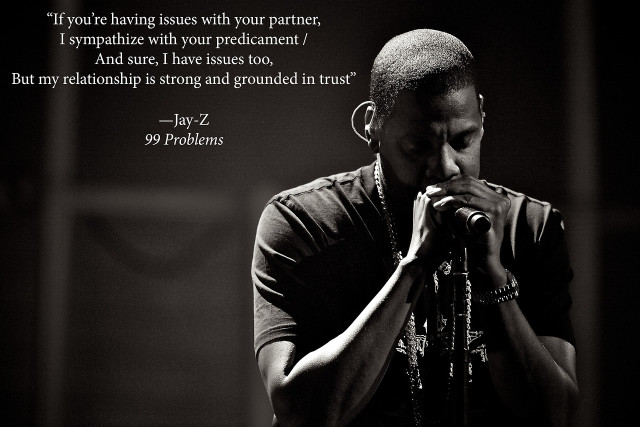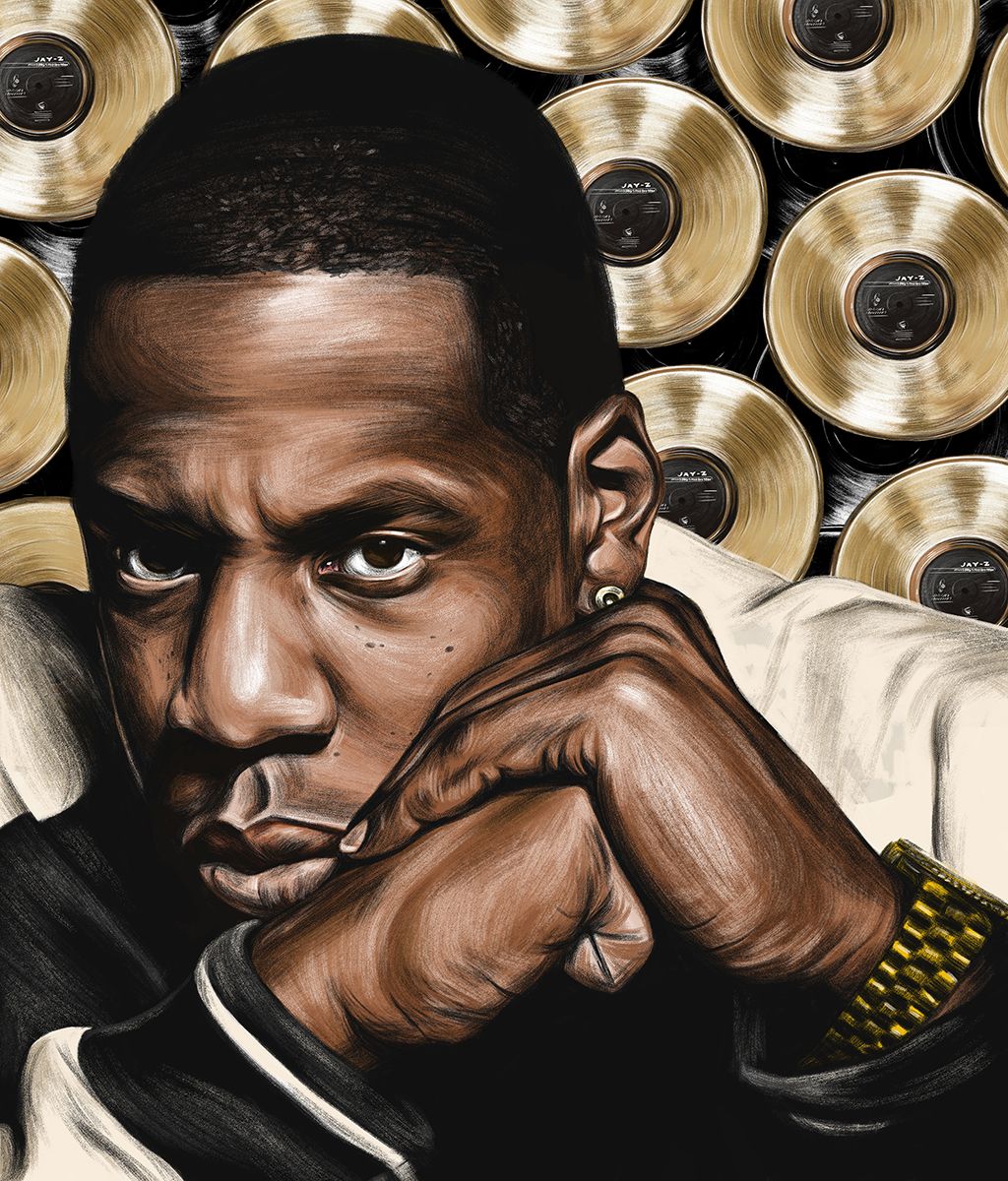

In photographs, Jay-Z can look lumpen and a little glowering. The only obvious sign of wealth is his watch, another chunky Euro number, unencumbered by diamonds. He's wearing retro Marc Jacobs aviator sunglasses, but there's no bling - no sparkly earrings or platinum chains. Jay, as everyone calls him, arrives without entourage, striding loose-limbed towards my table in bright white Burberry polo shirt, loose-fitting Rocawear jeans and pristine sneakers. So the day after the GQ shoot, we continue our conversation at Fifty Seven Fifty Seven, the bar at the Four Seasons Hotel, amid the steel and concrete of midtown Manhattan. There is, to put it mildly, plenty to talk about.

Later, Jay-Z himself was shot at from close range but was miraculously unharmed. Violence has punctuated Jay-Z's life, starting when, aged just 12, he shot his older brother in the shoulder following a domestic dispute. Meanwhile, a particularly nasty public spat with rival New York rapper Nas promised to spill over into genuine unpleasantness. In December of that year, he was sentenced to three years probation after pleading guilty to the stabbing of a music executive called Lance "Un" Rivera at a party. In April 2001, in an unrelated incident, Jay-Z was arrested for criminal possession of a weapon in the third degree (in other words, he wasn't holding the gun), after his bodyguard was discovered with a loaded Glock semiautomatic in his waistband outside a nightclub. Both murders remain unsolved, despite the best efforts of reporters, documentary film-makers and nightclub speculators, although not, if you believe many in the hip-hop community, the police. Most famously, in March 1997 his school friend, the New York rapper Christopher Wallace - aka Biggie Smalls or Notorious BIG - was shot dead in Los Angeles following a protracted and unsavoury war of words with his West Coast nemesis, Tupac Shakur - or 2Pac - who had been gunned down six months earlier in Las Vegas. But Jay-Z's life and career have not been without their tribulations. Born Shawn Carter on 4 December 1969, the last of four children, this former drug dealer from Brooklyn's blighted Marcy Projects is hip-hop's King Of New York, CEO Of The City, Chairman Of The Board and - as he signs himself on a Polaroid for GQ's Art Director - "The Black Thomas Crown". The biggest living space in the city, he thinks. His public image is a sort of unholy alliance of two of his mentors, allying the slick entrepreneurialism of P Diddy with the street-smart talent of Biggie Smalls.Īrguably, it's this potent combination which has made him the biggest-selling rapper in pop history, with the exception of Eminem, who is, of course, white - more of which later.įrom our perch high above the Meatpacking District, we can almost see as far as Jay-Z's apartment, 9,000sqft and change of TriBeca real estate. He's richer than 50 Cent, more beloved than Nas, more popular than OutKast, more credible than Snoop. As an icon of contemporary black culture, he has none. This, of course, makes him a far more compelling proposition than his your-bullets-cannot-harm-me contemporaries.Īs a rapper, then, he has few equals. The fictional Jay-Z - the Jiggaman, the Jay Hova - is a formidable figure for sure, but he's not without neuroses. There's braggadocio, of course, but also an unprecedented sensitivity, particularly on later records such as "Song Cry", in which he dissects the break-up of a past relationship. Occasionally, he strives for universality: Jay-Z as ghetto Everyman more often he's content simply to trust in the power of his specific experience. He picks at his past like a scab - the childhood in the streets, the father who left when he was 11, the failed relationships, the years selling drugs, the supernova success. Jay-Z's raps are relentlessly autobiographical. His subject, as ever, is himself and his extraordinary history. His wordplay thrives on the comparative and the oppositional - each line mirrors or contradicts the one that went before.

His phrasing - or "flow", as it's termed in hip-hop - is melodious, relaxed, apparently effortless. His sentences are punctuated by laughs, sighs, exhalations, giving them an instantly accessible, conversational tone.

His style, as on his records, is laid-back, commanding but patient, occasionally almost exasperated, as if he were a mathematician explaining a complicated equation to a small child.


 0 kommentar(er)
0 kommentar(er)
